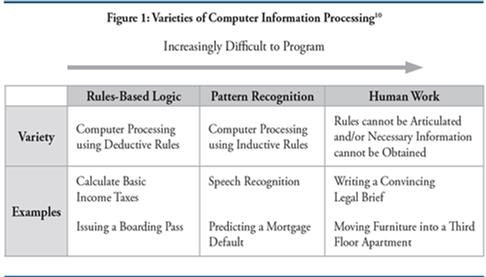529 Plan
January 27, 2014Estate Planning
January 27, 2014A New Paradigm
The recession and technological advancement have exposed inefficient companies, executives and frontline workers. New technology puts at risk the entire business model of some companies.
A professional’s tasks involve applying intellectual capital, problem solving and future planning skills. These capabilities are often referred to as the human comparative advantage to a machine or robot. However, this advantage may not last. As companies begin to incorporate the voice recognition capabilities invented by Nuance Communications and computers with logical problem solving abilities such as IBM’s Watson, select white collar positions will be at best changed, at worst eliminated. McAfee argues in his TED talk that technology is racing ahead, leaving the average worker behind.
Industry Example: Architecture
Architecture is a field hit hard by the recent recession. According to Kermit Baker, chief economist for the American Institute of Architects, architecture firms shed about 30 percent of their positions during the downturn, but have expanded by only about 5 percent since.
In a recent Boston Business Journal article, Peter Kuttner, president of Cambridge Seven Associates and a former president of the Boston Society of Architects, said that his firm dropped from 70 to 45 people during the recession, and five years later has grown only to 60.
Layoffs in architecture disproportionately hit professionals who graduated between 2005 and 2008, as newest members of a firm were typically the first to be let go when the recession hit.
“Now they’re down six or seven years out of college, and some might have maintained their technical skills but some probably not and they might now be seen as less favorable (job) candidates than a current graduate with new skills and trained in the latest technology,” said Baker.
AIA member surveys reveal that 25-to-30% of laid off architects moved to other professions such as construction or property management, and another 10 to 15% retired.


